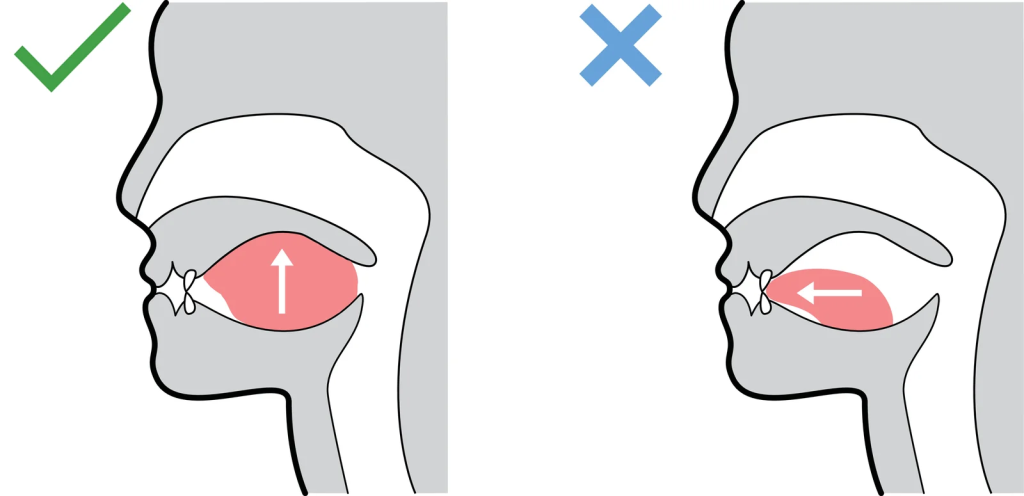What if I told you your jawline isn’t just about genetics or fat loss—but about how you breathe?
Yes, your daily breathing habits may be sabotaging your facial structure, weakening your jawline, and even changing the way your face looks over time. The shocking part? Most people are breathing wrong without even realizing it. The good news? It takes just 2 minutes a day to start fixing it.
Let’s break down the science, the myths, and most importantly—how you can reverse the damage.

What Can Happen After 30 Days
| Area | Visible/Noticed Change |
|---|---|
| Jawline Definition | Slight improvement in contour and tightness around the jawline |
| Facial Symmetry | More balanced look as tongue posture begins to support mid-face lift |
| Breathing Quality | Easier nasal breathing; reduced mouth dryness or snoring |
| Posture | Reduced forward head posture; more natural upright alignment |
| Neck Tone | Tighter skin and muscle tone under the chin and around the neck |
| Sleep Quality | Better oxygen flow may improve sleep; less waking up with dry mouth |
| Muscle Awareness | Increased control of tongue and facial muscles |
| Confidence | Boost in self-awareness and confidence from improved facial engagement |
The Shocking Truth: How Breathing Affects Your Face Shape
Do you know: Over 60% of adults are habitual mouth breathers, especially when sleeping or during low-effort activities.
Here’s the problem: Mouth breathing encourages the tongue to rest low in the mouth, which can gradually change the alignment of your jaw and cause your facial structure to appear longer, weaker, and less defined.
What Happens When You Breathe Through Your Mouth:
- Your tongue drops to the bottom of the mouth
- Facial muscles weaken due to poor support
- The jawline becomes less prominent over time
- Posture suffers, leading to further facial sagging
- It may even lead to issues like snoring, sleep apnea, and fatigue
This condition is often called “long face syndrome” in orthodontics and is common in people who mouth breathe during developmental years—but the damage can still occur or worsen in adulthood.
Myth Buster: “It’s Just Genetics”
Many believe a weak jawline is purely genetic. While genetics do play a role, habitual behaviors like mouth breathing, poor tongue posture, and slouching posture play an equally—if not more—powerful role over time.
Interesting fact: Anthropological studies show that ancient humans—who breathed through their noses and chewed tough, natural foods—had far more prominent and symmetrical jawlines.
The Fix: Correcting Your Breathing to Reshape Your Jawline
Step 1: Learn the “Mewing” Technique
Developed by British orthodontist Dr. John Mew, mewing is the practice of keeping your tongue flat against the roof of your mouth, lips sealed, and breathing through your nose. It trains your face to develop better muscular support and posture.
How to Mew (Takes 2 Minutes a Day to Start)

- Close your lips gently
- Rest your entire tongue on the roof of your mouth, not just the tip
- Keep your teeth lightly touching or slightly apart
- Breathe through your nose only
Hold this for 2 minutes a day consciously—then gradually make it your new default. It’s subtle, but over weeks and months, it trains the muscles around the jaw and lifts the mid-face.
Step 2: Strengthen Jaw and Neck Muscles

You can complement mewing with quick, resistance-based facial exercises:
- Chin tucks: Sit upright and pull your chin straight back (not down) to stretch your neck
- Tongue push-ups: Press the tongue firmly against the roof of the mouth repeatedly
- Neck curls: Lying flat, gently lift your head while keeping the chin tucked
These improve muscle tone around the jaw, giving your face a sharper contour.
Step 3: Posture Check

Bad posture, especially a forward head posture, can cause the neck and jaw to appear weak and recessed.
Try this:
- Every hour, reset your posture: ears above shoulders, chin parallel to the floor
- Avoid sleeping on your stomach (which flattens the jawline)
- Use a low pillow that supports nasal breathing
Additional Tips to Support a Strong Jawline
- Nasal hygiene: Clear airways support proper nose breathing. Use saline rinses if necessary.
- Chew harder foods: Switch from processed soft foods to things like raw carrots or sugar-free gum
- Hydrate well: Dehydration leads to slack skin and muscle tone loss
Final Thoughts
Breathing is so automatic that most of us never question how we do it—but it turns out, it’s a silent sculptor of our face. A weak jawline isn’t always a matter of bad luck or age—it’s often a reflection of poor breathing and posture habits over time.
By switching from mouth breathing to proper nasal breathing and tongue posture—even for just 2 minutes a day—you can start reclaiming a sharper, stronger jawline. The changes may be gradual, but they’re real, lasting, and natural.
Your next breath could be the beginning of a better jawline. Start today.
Frequently Asked Questions (FAQs)
Can breathing really change your jawline?
Yes. Chronic mouth breathing alters tongue posture and muscle engagement, which can gradually affect jaw development and facial aesthetics. While genetics play a role, breathing habits are a powerful modifier of facial structure over time.
What is the fastest way to fix a weak jawline caused by bad breathing?
Begin with nasal breathing, proper tongue posture (mewing), and posture correction. These habits, done consistently—even starting with just 2 minutes a day—can slowly reshape muscle tone and improve jawline definition.
Is mewing scientifically proven?
Mewing is rooted in orthodontic principles of tongue posture and facial development. While long-term clinical studies are limited, anecdotal evidence and expert opinions suggest it can positively impact facial structure, especially when combined with proper breathing.
How long does it take to see results?
Visible changes vary based on age, consistency, and genetics. Some people report improvements in a few weeks, while for others, it may take several months. Mewing and breathing correction are not quick fixes but long-term improvements.
Can children benefit from these techniques too?
Absolutely. Children’s bones are more malleable, so correcting breathing and posture early can significantly influence jaw and facial development. It’s best done under the guidance of a pediatrician or orthodontist.
Should I do mewing all day?
Ideally, yes—but don’t stress if you can’t. Start with a few conscious sessions (like 2 minutes a day), and gradually work toward making it your natural resting posture. Over time, it becomes second nature.
Is mouth breathing during sleep harmful to the jawline?
Yes. It contributes to facial elongation and a recessed jawline. Using nasal strips, side-sleeping, and maintaining clear nasal passages can encourage nose breathing at night.
Is it ever too late to improve my jawline through breathing?
It’s never too late. While changes may be more subtle in adults, muscle tone, posture, and breathing patterns can still be improved at any age—with consistent effort and patience.





